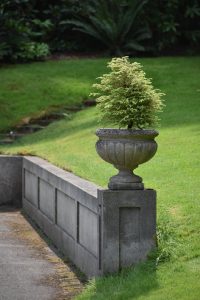Crafting an Urn Garden: A Beautiful Final Resting Spot

Creating an urn garden offers a unique way to honor and celebrate the lives of loved ones while enhancing the beauty of your outdoor space. This serene and personalized resting spot allows you to incorporate meaningful elements such as plants and flowers, ensuring that their memory lives on in a tranquil setting. The process involves thoughtful consideration—from selecting the right location to carefully designing the layout of your urn garden. By doing so, you create a nurturing environment that reflects the essence of those you wish to commemorate.
- Choosing the Right Location for Your urn Garden
- Selecting the Perfect Urns
- Incorporating Meaningful Plants and Flowers
- Plant Selection Comparison
- Designing the Layout of Your urn Garden
- Maintaining Your urn Garden for Longevity
- Frequently Asked Questions
- What materials are best for crafting an urn garden?
- How do I choose the right location for my urn garden?
- What types of plants are suitable for an urn garden?
- Can I personalize my urn garden with decorations?
Choosing the Right Location for Your urn Garden
Selecting the ideal location for your urn garden is crucial, as it sets the tone for a serene and respectful environment. Here are some key considerations to help you choose:
- Sunlight Exposure: Determine how much sunlight your selected area receives. Most urn gardens thrive in areas with at least six hours of sunlight daily.
- Accessibility: Choose a spot that is easy to reach for family and friends. A peaceful setting encourages regular visits while honoring your loved one’s memory.
- Privacy: Look for a location that offers some degree of seclusion. This could be a corner of your backyard or a quiet space in a community garden.
- Soil Quality: Ensure the soil is well-draining and suitable for the plants you plan to incorporate into your urn garden.
- Environmental Harmony: Consider how the urn garden fits into your overall landscape. A harmonious design enhances its beauty and complements natural surroundings.
By thoughtfully considering these factors, you can create a tranquil urn garden that serves as a beautiful final resting spot, ensuring a lasting tribute to those you wish to honor.

Selecting the Perfect Urns
Choosing the right urns for your urn garden is crucial, as they serve as both decorative elements and guardians of cherished memories. Here are some key factors to consider when selecting the perfect urns:
- Material: Opt for durable materials that withstand weather conditions. Common choices include:
- Ceramic: Offers aesthetic appeal but may chip in extreme weather.
- Metal: Provides longevity and a modern look.
- Stone: Ensures a timeless feel, though it can be heavy.
- Design: Select urns that resonate with the personality or preferences of your loved one. Consider:
- Classic shapes for traditionalists.
- Unique designs for creative spirits.
- Size: Ensure the urns fit well within your garden layout. Keep in mind:
- Large urns can act as focal points.
- Smaller urns work well in clusters.
Additionally, consider personalizing the urns with engravings or symbols reflective of your loved one’s life. Ultimately, the perfect urns will create a serene atmosphere in your urn garden, allowing visitors to reflect and remember.
Incorporating Meaningful Plants and Flowers
When creating an urn garden, the plants and flowers you choose can significantly enhance its beauty and symbolism. Selecting meaningful flora not only adds aesthetic value but also represents cherished memories. Consider the following suggestions to personalize your urn garden:
- Roses: Symbolize love and can honor a beloved family member or friend.
- Lily of the Valley: Represents sweetness and humility, perfect for a gentle spirit.
- Lavender: Known for its calming properties, lavender can promote serenity in your garden.
- Iris: Symbolizes faith and hope, making it a lovely addition for remembrance.
Plant Selection Comparison
| Plant | Symbolism | Growing Conditions |
|---|---|---|
| Roses | Love | Full sun, well-drained soil |
| Lily of the Valley | Humility | Partial shade, moist soil |
| Lavender | Calmness | Full sun, well-drained soil |
| Iris | Faith | Full sun to partial shade, well-drained soil |
By incorporating these meaningful plants in your urn garden, you create not only a tranquil environment but also a space filled with personal significance. Each element can serve as a living tribute, reminding visitors of the loved ones resting in peace nearby.
Designing the Layout of Your urn Garden
Creating an aesthetically pleasing layout for your urn garden is essential for honoring your loved ones and enhancing the natural beauty of the space. Consider the following elements when designing your urn garden:
- Shape and Size: Choose a layout that reflects personal tastes. Circular, rectangular, or even freeform shapes can work depending on your garden size.
- Focal Points: Position the urns as focal points within the garden. This draws attention to the memorial aspects while allowing for plant growth.
- Pathways: Incorporate pathways for easy access. Natural stone or gravel paths can guide visitors through the urn garden, enhancing the overall experience.
- Seating Areas: Create a serene environment by adding benches or chairs. This allows family and friends to reflect and spend time in the urn garden.
- Symmetry vs. Asymmetry: Decide whether you prefer a balanced or more organic look. Symmetrical layouts can provide structure, while asymmetry evokes a more relaxed feel.
By carefully considering these elements, you can design an urn garden that beautifully reflects the memory of those interred within, while also harmonizing with the natural environment.

Maintaining Your urn Garden for Longevity
To ensure your urn garden remains a beautiful and serene final resting spot, regular maintenance is essential. Here are some effective strategies to prolong its beauty and integrity:
- Watering: Keep the soil consistently moist but not waterlogged. Regular watering encourages healthy plant growth and maintains visual appeal.
- Weeding: Routinely remove weeds that compete with your plants for nutrients and water. This promotes a healthier environment for your urn garden.
- Pruning: Trim dead or overgrown branches to maintain the desired shape and encourage the growth of new foliage. This keeps your garden looking neat.
- Fertilizing: Use organic fertilizers to nourish your plants. This provides them with the necessary nutrients for robust health.
- Seasonal Check: Inspect your urn garden each season. Replace any distressed plants, and refresh mulch to retain moisture and inhibit weeds.
By incorporating these maintenance steps, you can ensure the lasting beauty of your urn garden, creating a peaceful and lasting tribute for years to come.
Frequently Asked Questions
What materials are best for crafting an urn garden?
When crafting an urn garden, it is essential to select materials that are not only aesthetically pleasing but also durable and weather-resistant. Common options include natural stone, ceramic, and metal urns. Additionally, incorporating various types of soil and organic amendments like compost can enhance the garden’s growth potential. Consider adding ornamental plants that thrive in your climate to create a serene and inviting environment.
How do I choose the right location for my urn garden?
Choosing the right location for your urn garden is crucial for its sustainability and visual impact. Look for a spot that receives adequate sunlight, as most plants require at least six hours of direct sunlight daily. Additionally, ensure the area has good drainage to prevent waterlogging. It’s also important to consider the proximity to family members who may wish to visit, ensuring the garden is accessible yet respects the surrounding environment.
What types of plants are suitable for an urn garden?
An urn garden can benefit from a variety of plants that complement the urn’s design and overall aesthetics. Suitable options include perennial flowers, succulents, and low-maintenance shrubs. For added color and texture, consider using trailing plants that cascade over the edge of the urn. Native plants are also an excellent choice, as they typically require less care and are better adapted to local weather conditions.
Can I personalize my urn garden with decorations?
Absolutely, personalizing your urn garden with decorations is a wonderful way to reflect the personality and memory of a loved one. You can use items such as wind chimes, decorative stones, or personalized plaques that commemorate their life. Incorporating elements such as small statues or fairy lights can also enhance the garden’s atmosphere, transforming it into a peaceful retreat that honors their memory.





